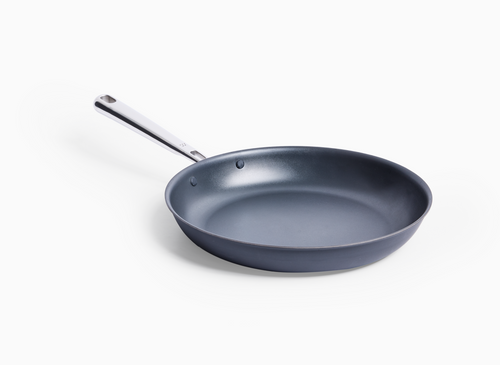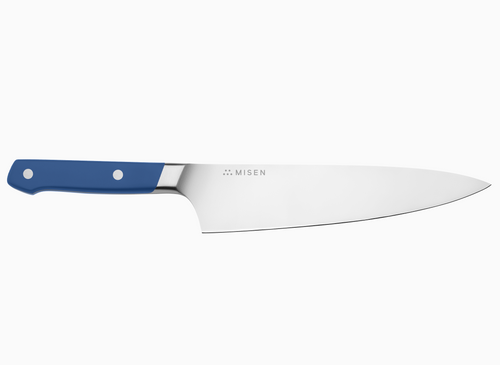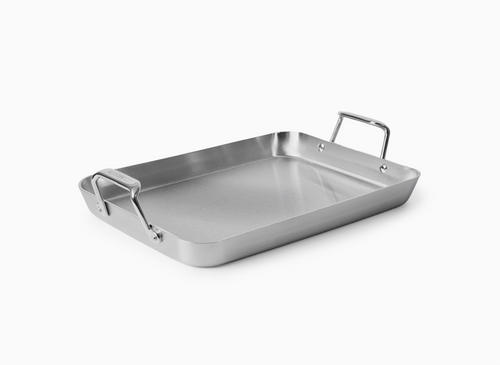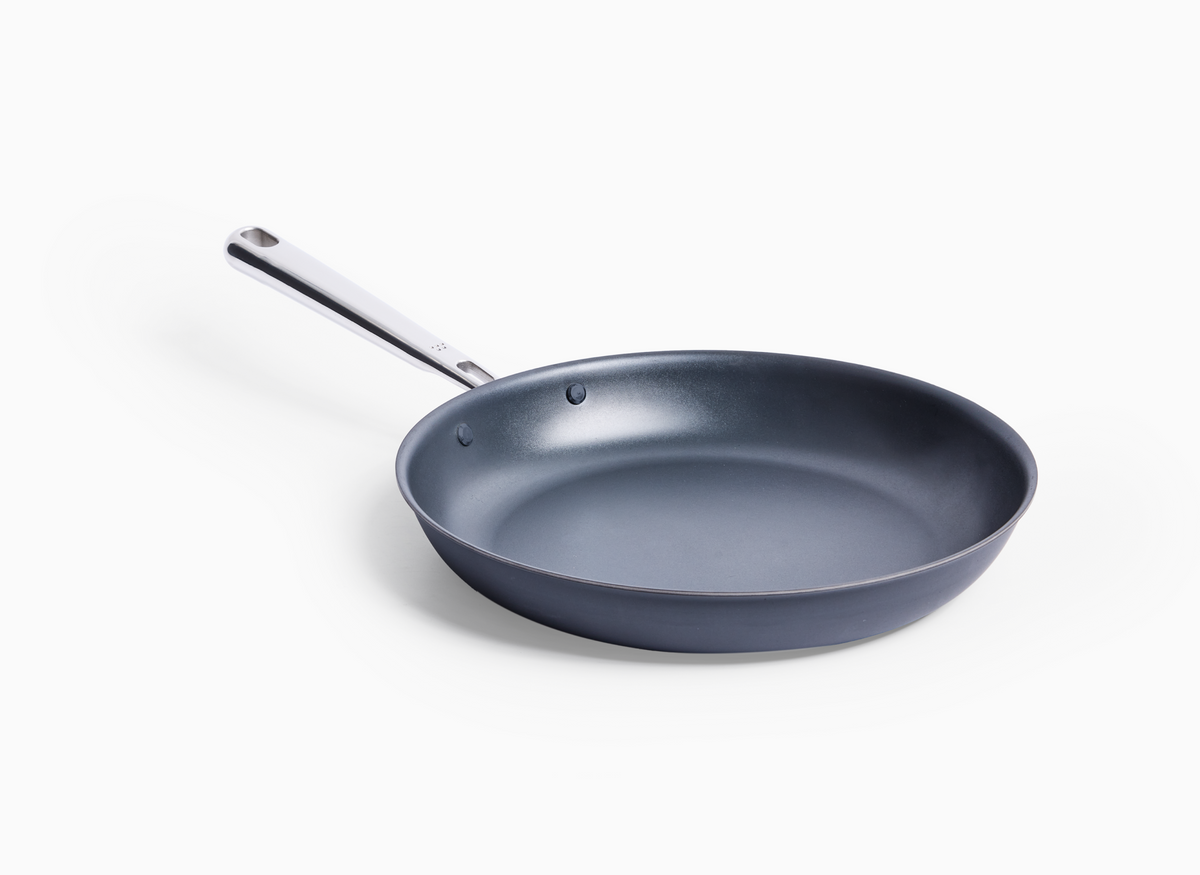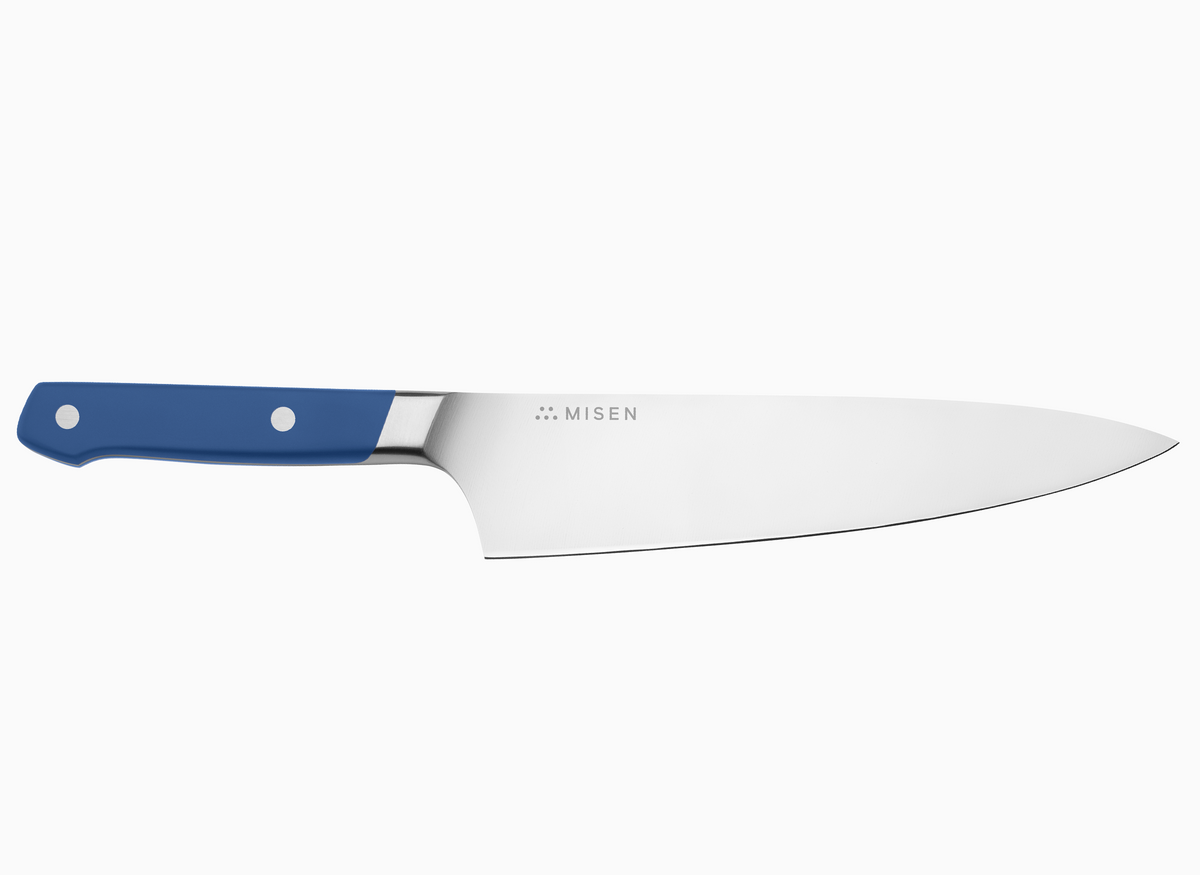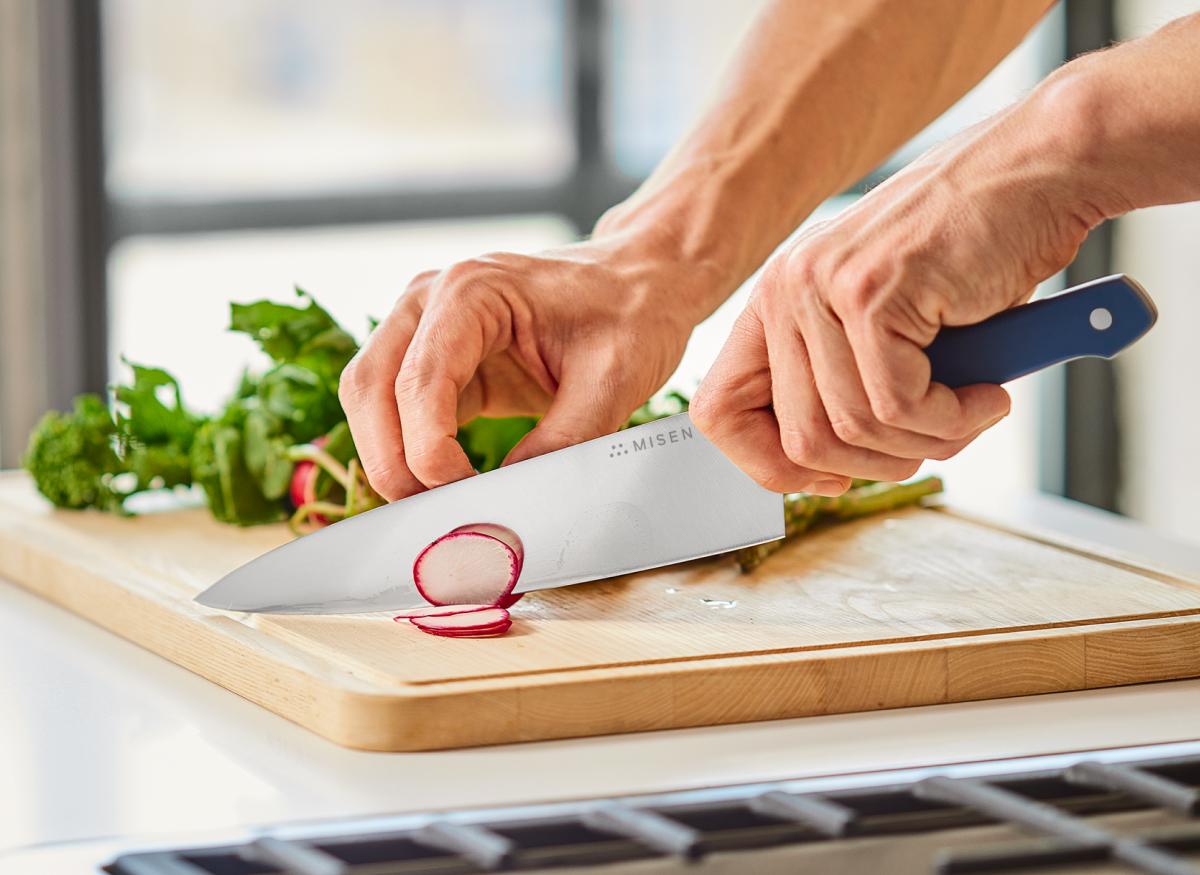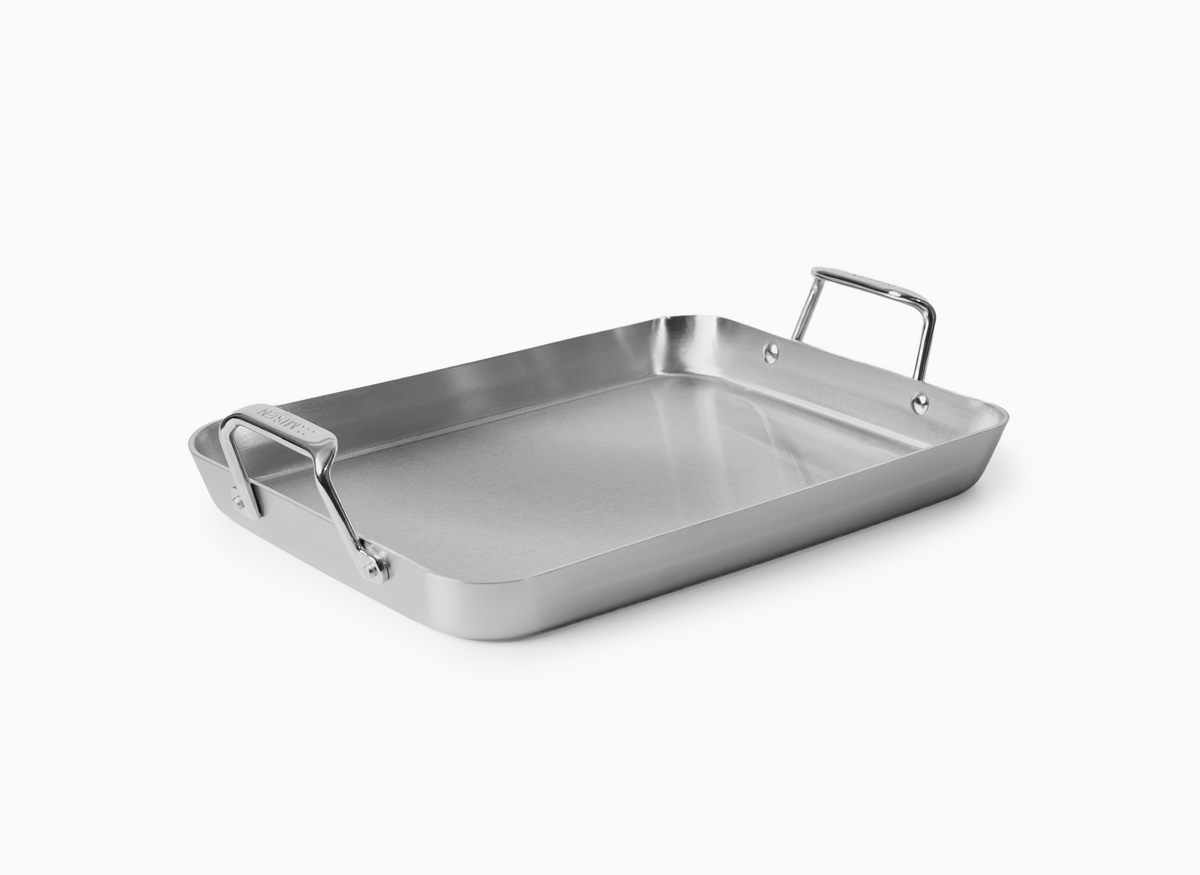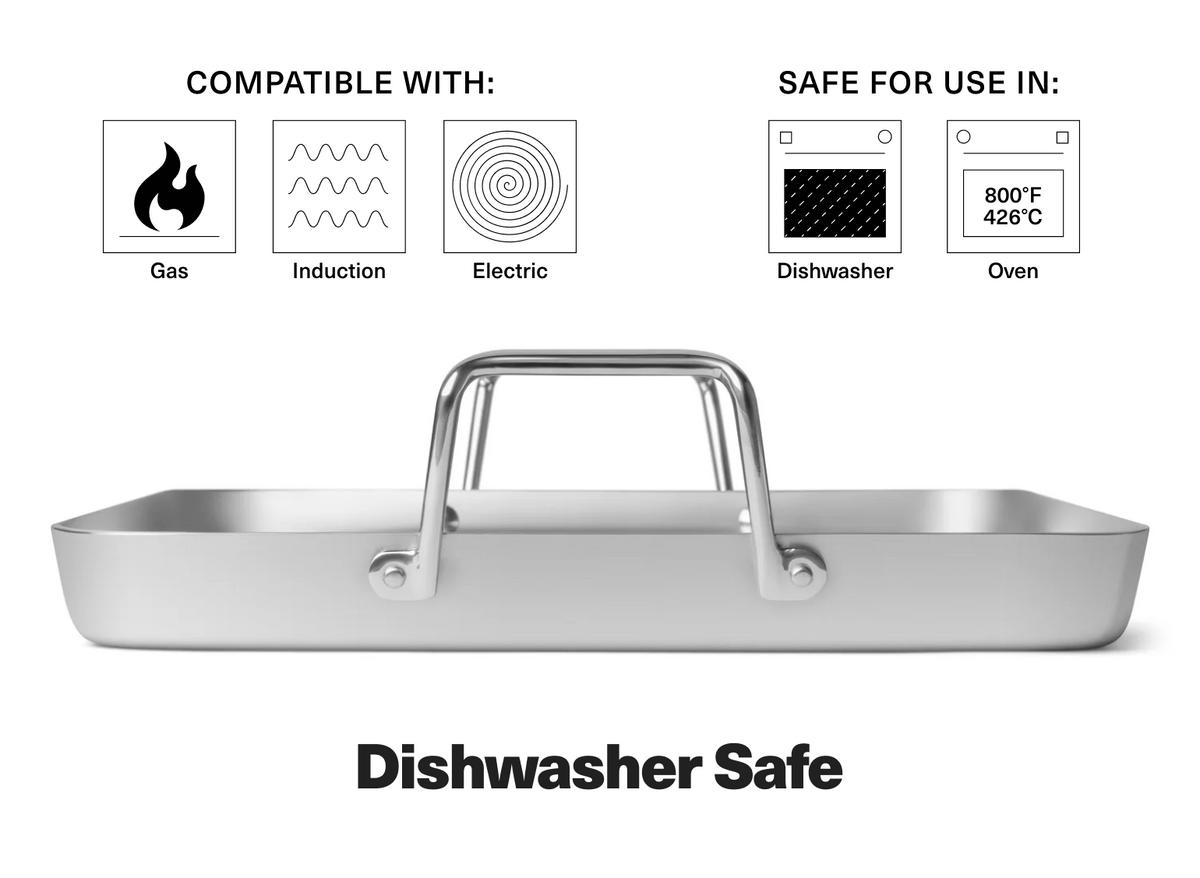Chef Spoon Buying Guide: How to Choose the Perfect Chef Spoon for Your Kitchen
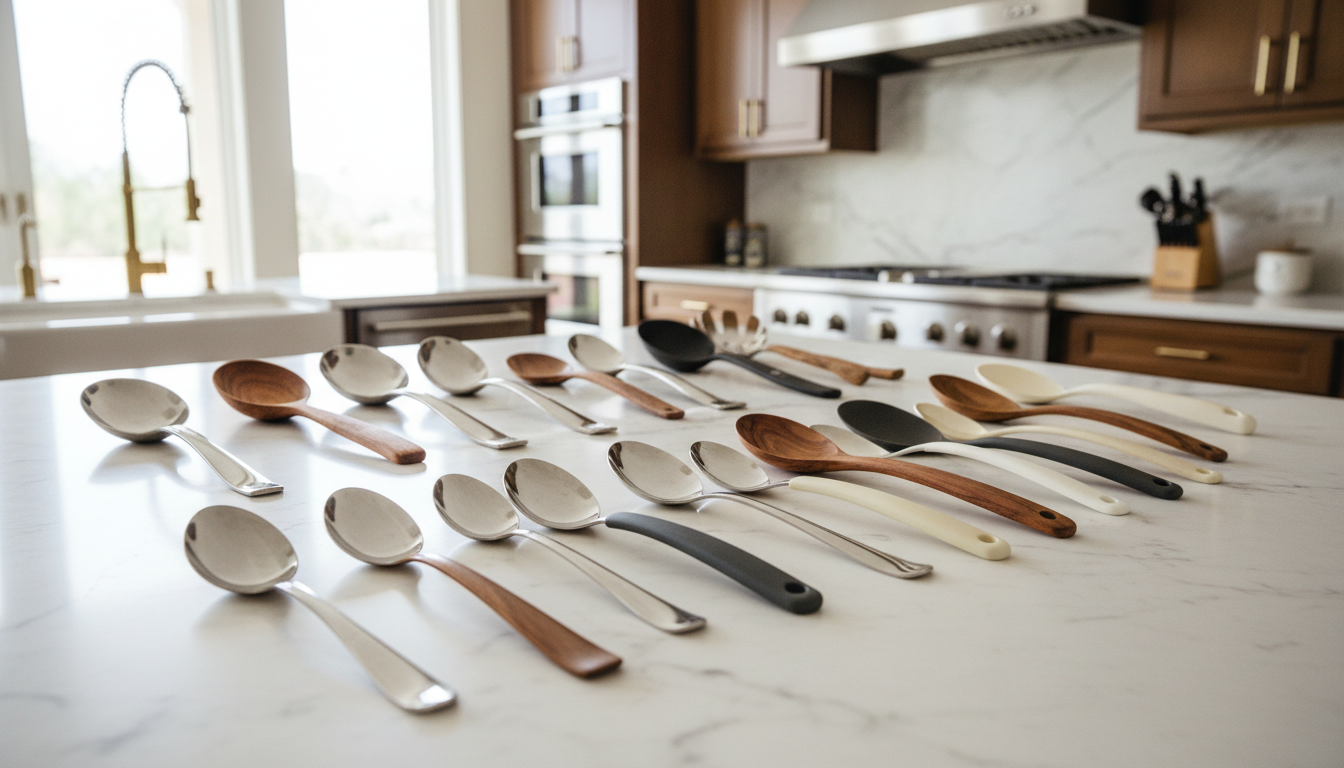
This comprehensive chef spoon buying guide equips home cooks and professionals alike to cut through kitchen-store clutter by zeroing in on the exact tools that match their cookware, cooking style, and grip, showing why one perfectly balanced, material-appropriate spoon outperforms a drawer of cheap options. Readers learn to pair stainless steel, silicone, or hardwood utensils to their pans, exploit ergonomic handle lengths and bowl shapes that hold 2.5 tablespoons for faster saucing and plating, and judge heat resistance, weight distribution, and edge designs that let a single spoonula stir, scrape, and serve without scratching non-stick or overheating hands. The article demystifies trade-offs—metal’s durability versus silicone’s 482 °F flexibility versus wood’s gentle insulation—explains why professional-grade sauce spoons and offset handles give precise control for decorative swooshes, and details care routines (hand-wash and oil wood, skip the dishwasher for longevity) that stretch a quality spoon into decades of daily service. By prioritizing versatile, well-balanced tools over bundled sets, cooks protect pricey pans, reduce fatigue, and turn out smoother sauces, intact pasta portions, and restaurant-worthy presentation, making the right chef spoon the small investment that elevates every dish they touch.
Key Factors to Consider in a Chef Spoon Buying Guide
Match your chef spoon’s material, handle length, bowl width, and slotting to the exact tasks you perform most—stirring thick batters, basting meats, draining pasta, or plating sauces—so every motion in the kitchen is safer, faster, and scratch-free.
Identifying Core Tasks for Your Spoon
Before choosing a chef spoon, identify exactly what you'll use it for in your kitchen. Different cooking tasks require specific spoon designs. For stirring thick mixtures like batters, you need a sturdy spoon with a comfortable grip [1]. Long-handled spoons keep your hands safely away from heat when working with hot liquids and sauces [2].
If you frequently drain items while cooking, slotted spoons with perforations allow liquid to drain away while retaining solid food [1]. Consider your cooking techniques—wooden spoons work best for non-stick cookware since they won't scratch surfaces [1], while stainless steel options offer strength for heavy-duty mixing [1]. Silicone spoons provide flexibility and heat resistance up to high temperatures [1]. For pasta enthusiasts, specialized pasta servers with pronged edges make serving long noodles effortless [2].
Assess whether you need a spoon primarily for stirring, serving, tasting, or a combination of these functions [1]. The right chef spoon should match your most frequent cooking methods, whether that's preparing soups and stews, mixing batters, or serving finished dishes.
Understanding Bowl Depth and Width
Bowl dimensions significantly impact a chef spoon's functionality. Professional-grade sauce spoons typically feature wider, shallower bowls that hold approximately 2. 5 tablespoons—more than double a standard dinner spoon's capacity [4].
This increased volume lets you efficiently transfer ingredients between cooking vessels and plates without multiple trips [4]. A shallower bowl depth with wider surface area creates the ideal tool for basting techniques, allowing you to cascade hot butter or oil evenly across proteins [4]. The wider bowl also functions as a pseudo-spatula for careful flipping or manipulating delicate ingredients [4].
When choosing, consider that spoons with slightly offset bowls provide better control for precision plating tasks like creating decorative swoops in sauces or purees [3]. The bowl's tapered end directs liquids in a controlled stream rather than unpredictable splashes—essential when drizzling sauces or dressings [4]. For maximum versatility, select a spoon with enough bowl width to scoop substantial portions but shallow enough to maneuver easily in tight cooking spaces.
Evaluating Heat Resistance and Durability
Heat resistance directly impacts both safety and performance when selecting chef spoons. Different materials offer varying temperature thresholds—hardwoods like maple, beech and oak withstand high heat without warping, while inferior softwoods crack and splinter when exposed to intense cooking temperatures [5]. Quality wooden spoons won't conduct heat aggressively, protecting your hands during extended stirring sessions, unlike metal alternatives that quickly become too hot to handle [5].
For maximum heat protection, silicone spoonulas resist temperatures up to 450-600°F depending on quality, making them ideal for hot oil, candy-making, or working directly in pans [6]. When evaluating durability, examine the spoon's construction for signs of quality—one-piece designs without glued parts reduce failure points, while smooth, splinter-free surfaces indicate proper finishing [5]. Proper care significantly extends lifespan; wooden spoons require hand washing and occasional mineral oil treatment, while silicone and metal options generally tolerate dishwashers [5].
Replace wooden utensils when they develop cracks or persistent odors, as these imperfections harbor bacteria and compromise performance [5]. For high-heat cooking, avoid leaving wooden spoons submerged in hot liquids, which leads to warping and reduces their useful life [5]. When shopping, verify heat resistance claims and choose implements with heat-safe handles that remain comfortable during prolonged use.
Material Choices: Pros and Cons for Everyday Cooking
Stainless steel spoons conquer acidic sauces without bending or tainting flavors, while silicone ones flex into every pan corner at 482°F without scratching your non-stick—pick the metal for brute durability and the polymer for gentle, waste-free scraping.
Stainless Steel: Strength and Longevity
Stainless steel chef spoons offer exceptional durability that withstands daily cooking demands without bending, warping or breaking. Unlike wooden alternatives, these spoons resist corrosion and staining even when exposed to acidic ingredients like tomato sauces or citrus [7]. Their heat resistance makes them ideal for high-temperature cooking techniques, as they won't deform when left briefly in hot pans [7].
The non-reactive properties ensure food flavors remain unaltered—particularly important when working with acidic or alkaline ingredients that might interact with less stable materials [7]. From a hygiene perspective, stainless steel's non-porous surface resists bacteria and doesn't absorb food odors or flavors, preventing cross-contamination between dishes [7]. This material also offers practical maintenance advantages: stainless spoons can be cleaned in dishwashers without degradation and don't require special treatments to maintain their integrity [7].
While slightly heavier than silicone or wood alternatives, the weight provides better control when mixing dense ingredients. The primary drawback is potential scratching on non-stick cookware surfaces, though many manufacturers now offer designs with polished edges to minimize this risk [7].
Silicone: Flexibility and Non‑Stick Safety
Silicone chef spoons combine flexibility with exceptional heat resistance, withstanding temperatures up to 482°F (250°C) without melting or releasing harmful chemicals [8]. Their soft, pliable structure conforms to pot corners and curved surfaces, retrieving every bit of food that would otherwise be wasted [8]. Unlike metal alternatives, silicone won't scratch non-stick cookware, preserving expensive pan coatings while preventing surface damage [8]. The non-porous material resists staining and odor absorption, eliminating flavor transfer that can occur with wooden utensils [8].
Food-grade silicone doesn't leach chemicals into food even at high temperatures, making it safer than plastic which may release BPA and other compounds when heated [8]. This material's natural non-stick properties mean sauces and batters slide off easily during cooking and cleaning [8]. While some premium silicone spoons can withstand even higher temperatures—up to 600°F (315°C)—making them ideal for high-heat applications like candy-making [9]. Silicone's gentle touch on cookware makes these spoons particularly valuable for those who've invested in quality non-stick pans [9].
Though silicone may cost more than basic plastic options, its durability justifies the investment—these spoons won't crack, warp or deteriorate with regular use [8]. Most silicone utensils are dishwasher-safe, though hand washing can help preserve their quality over time [8].
Wood and Composite Options: Traditional Feel
Wooden spoons offer a traditional cooking experience with practical benefits beyond aesthetics. They won't scratch non-stick surfaces or leave metallic tastes in food, making them ideal for preserving cookware integrity [10]. Their naturally insulated properties prevent heat transfer to your hand during extended stirring, unlike metal alternatives that quickly become too hot to handle [10].
This insulation also benefits temperature-sensitive recipes, as wooden utensils don't absorb heat that could disrupt precise cooking temperatures [10]. Quality wooden spoons provide the strength needed for vigorous stirring while offering a grip that improves with use, essentially becoming customized to your hand over time [10]. The non-reactive nature of wood prevents it from interacting with acidic ingredients that might alter food flavors [10].
Modern composite wood options combine these traditional benefits with enhanced durability through resin infusion or layered construction techniques. These hybrids resist the moisture absorption that can eventually cause traditional wooden spoons to crack, while maintaining the gentle cooking surface that won't damage delicate cookware [10]. When evaluating wood options, choose hardwoods like maple, beech or oak for maximum longevity, as softer woods split more readily under kitchen stress.
Balancing Cost and Performance
Chef spoons range dramatically in price, from budget-friendly options under $10 to premium tools exceeding $100. Here's the truth: quality beats quantity every time. One properly crafted spoon with the right depth and balance outperforms a drawer full of cheap alternatives [11]. For everyday cooking, invest in tools that perform multiple functions. Look for pharmaceutical-grade silicone with unibody construction that prevents bacteria buildup in crevices [12].
Premium materials justify higher prices when they deliver measurable benefits—stainless steel's decades-long lifespan produces just 7g of CO₂ over its lifetime compared to 597g for disposable plastic versions [11]. Consider your cooking style. Professional kitchens choose stainless steel for its unmatched durability and sanitizing capabilities, while home cooks might prioritize silicone's flexibility and nonstick safety [11]. Higher-end sauce spoons deliver exceptional value through their oversized shallow bowls holding 2. 5 tablespoons—more than double a standard spoon's capacity—making them indispensable for precision saucing and plating [11].
Skip pre-packaged sets if they include items you rarely use. Instead, test different handles, bowl shapes, and weights to find what feels right in your hand [11]. A focused collection of well-chosen tools—like a versatile [stainless steel spoon](https://misen. com/products/slotted-spoon) that handles both stirring and serving—proves more valuable than multiple mediocre options. As discussed in the previous section, proper care significantly extends lifespan—wooden spoons require hand washing and occasional mineral oil treatment, while silicone options generally tolerate dishwashers [11].
Ergonomic Design and Functional Features
A professional chef spoon must marry a 9–10.5-inch curved, lightly textured handle with 2–3 oz of stainless-steel-centered weight distribution to keep your hand safely clear of heat, eliminate wrist fatigue, and give you precise, wobble-free control—even when you stir hundreds of thick sauces in a single service.
Grip Comfort and Handle Length
Handle length directly impacts both safety and control when using chef spoons. Longer handles (9-10. 5 inches) keep hands at a safe distance from heat while providing better reach into deep pots [14]. The ideal length balances reach with maneuverability—too long becomes unwieldy for precise work.
Curved handles that naturally conform to your palm distribute pressure evenly across your hand during extended cooking sessions, preventing the repetitive strain that leads to fatigue [14]. This ergonomic consideration becomes crucial when stirring thick mixtures or during restaurant service where a chef might use the same spoon hundreds of times [14]. Weight distribution affects control—professional-grade utensils engineer handles to balance the spoon's weight, allowing for more controlled movements when working with delicate sauces [14]. Surface texture matters too; slightly textured handles provide secure grip even when hands are wet or greasy [14].
Some manufacturers have developed specialized features like the curved, smooth handle on the ChefCore spoon that maintains comfort during extended cooking [13]. For maximum comfort during prolonged use, look for handles with a slight curve that follows the natural contour of your hand while providing enough surface area for a stable grip [15].
Weight Distribution for Controlled Stirring
Weight distribution significantly impacts your control when stirring and mixing. Professional-grade chef spoons balance their weight between handle and bowl, allowing for precise movements with less wrist fatigue during extended cooking sessions [16]. The ideal balance requires 2-3 ounces concentrated in a stainless steel core to prevent the wobbling that causes uneven stirring patterns [17].
Lightweight plastic handles force you to overcompensate, leading to inconsistent results particularly when working with thick mixtures [17]. Look for spoons with unibody construction that seamlessly transitions from handle to bowl, eliminating weak points while distributing weight evenly throughout the utensil [17]. For optimal control during repetitive stirring tasks, aim for handles between 9-10 inches that provide perfect balance between reach and maneuverability [16].
A properly balanced spoon becomes an extension of your hand, offering the control needed for techniques like the figure-8 motion that professional chefs use to prevent lumps in sauces [17]. When testing spoons in person, assess how the weight feels from multiple grip positions – a well-designed spoon maintains stability whether choking up for precision work or using the full handle length for leverage in thick mixtures [17].
Anti‑Slip Features and Heat‑Safe Handles
Anti-slip features in chef spoons provide essential security when handling hot or wet ingredients. Unibody stainless steel designs like the TECHEF ChefCore offer heat resistance without joints that could trap bacteria or become weak points [18].
Look for textured or contoured handles that maintain grip when hands are wet or greasy—customers report that properly balanced utensils reduce hand fatigue while maintaining control during extended cooking [18]. The ideal handle feels "comfortable to hold, even during prolonged use" with ergonomic curves that naturally conform to your palm, distributing pressure evenly during repetitive motions [18].
When evaluating materials, consider your typical cooking temperature; stainless steel conducts heat more readily than silicone or wood but offers superior durability [18]. Professional kitchens often choose all-metal designs for their sanitizing capabilities despite potential heat transfer, while home cooks working with high-heat applications benefit from handles with insulated sections to prevent burns [18].
Multi‑Purpose Edge Designs (flat, Angled, Spoonula)
Edge designs significantly impact a chef spoon's versatility in the kitchen. Spoonulas combine the best features of spatulas and spoons with angled, flexible edges that scrape down pot sides with ease. These hybrid tools excel where traditional flat-edged spoons fall short, keeping ingredients moving uniformly without losing sauce to pot corners during quick-cooking preparations [6].
The slightly curved bowl shape makes transferring food from pan to plate simpler than flat spatulas allow. Spoonulas prove particularly effective for making roux, lemon curd, scrambled eggs, and saucy stir-fries—anywhere you need both scooping ability and edge precision [6]. Flat-edged spoons offer stability for stirring and serving, while angled designs provide better access to corners and edges of cooking vessels.
For maximum versatility with minimal drawer space, prioritize multi-purpose designs that combine functions rather than collecting specialized tools for every task.
Matching Spoon Size and Shape to Your Kitchen Needs
Match your spoon's length, bowl depth, and material to each specific pot—long deep spoons for stockpots, nimble narrow ones for sauciers, and silicone or wood to safeguard non-stick—so every tool feels like a natural extension of the cookware rather than an awkward mismatch fighting your food.
Choosing the Right Spoon Size for Pots and Pans
Think of matching spoons to cookware like choosing the right tool for any job—size matters. Just as commercial kitchens match pan sizes to specific tasks, your spoons should fit your cooking vessels [19].
For large stockpots and Dutch ovens, you'll want longer handles (9-10 inches) with deeper bowls that can reach corners and move substantial amounts of food. Medium saucepans pair best with standard 8-9 inch spoons that offer control without excess length getting in the way.
For small sauciers or butter warmers, shorter spoons with narrower bowls give you the precision you need without overwhelming the pan. The key is balance—your spoon should feel like a natural extension of the pot, not an awkward mismatch that fights against you [19].
Specialty Shapes: Sauce, Tasting, and Scraping
As we covered in earlier sections, specialty spoons like sauce spoons and spoonulas serve specific purposes in your kitchen. The sauce spoon stands out with its offset handle and generous bowl that holds 2. 5 tablespoons—perfect for everything from basting to plating [3].
Consider the [Misen plating chef spoon](https://misen. com/products/plating-chef-spoon) which exemplifies this versatility with its precision-tapered tip and balanced design. For tasks requiring both stirring and scraping, remember that spoonulas (discussed in "Multi-Purpose Edge Designs") combine the best of both worlds.
The key is matching the tool to your cooking style—if you frequently plate sauces or need precise portion control, invest in a quality sauce spoon. If you're constantly scraping down bowls and pots, a flexible spoonula deserves a spot in your arsenal.
Adapting to Different Cookware Materials
Your cookware dictates your spoon choices—it's that simple. As we explored in the materials section, different spoon materials interact uniquely with various cookware surfaces. For non-stick pans, stick with wood, silicone, or nylon to protect those precious coatings [20].
Wooden spoons remain the versatile choice, staying cool in your hand while being gentle on all surfaces [22]. Silicone shines with extreme heat resistance (up to 482°F) and flexibility that reaches every corner [20]. When cooking with stainless steel, cast iron, or copper, break out the metal spoons—they're built for heavy-duty tasks like scraping up fond and breaking down tough ingredients [21].
Just remember: metal conducts heat quickly, so keep a towel handy for those extended cooking sessions. The bottom line? Match your tools to your cookware and you'll protect your investment while cooking more effectively.
Conclusion: Making a Confident Choice and Maintaining Your Chef Spoon
Recap of Buying Priorities
When selecting the perfect chef spoon, prioritize quality over quantity. A streamlined collection of versatile, well-made tools serves you better than a drawer full of mediocre options. Start by matching your spoons to your cookware—as covered in Section 3, protecting your non-stick surfaces means choosing wood or silicone over metal [23].
Each material brings specific benefits we explored earlier: stainless steel delivers professional-grade durability, wooden spoons offer that traditional feel with excellent heat insulation, and silicone spoonulas merge stirring and scraping functions beautifully. Think about your actual cooking habits—do you need precise sauce control? Look for spoons with shallow, wide bowls holding 2.
5 tablespoons or more. Remember that proper care, which varies by material as discussed in Section 2, dramatically extends your tools' lifespan [23].
How Misen Chef Spoons Meet the Guide
Misen chef spoons integrate the key buying factors covered throughout this guide. Their plating chef spoon features a perfectly balanced 8. 7-inch length—falling within the ideal 8-10 inch range that provides both reach and control during extended cooking sessions [24]. At 3.
9 ounces, the weight distribution hits the sweet spot between substantiality for controlled stirring and lightness for delicate work [24]. The spoon's 2. 1-inch width provides ample capacity while maintaining maneuverability in tight cooking spaces [24]. For multi-purpose functionality, the gently tapered tip enables precision plating techniques, creating restaurant-quality swooshes and controlled sauce application [24].
The deep bowl design offers versatility, handling everything from basting to serving while maintaining portion control [24]. Misen prioritizes durable construction that meets professional standards without unnecessary features, focusing on the essentials that matter in daily cooking [24]. The design balances form with function—the precision tip that creates decorative plating also serves practical purposes when working with delicate ingredients [24]. This alignment with essential criteria demonstrates how thoughtful design can deliver kitchen tools that work efficiently across various cooking tasks without superfluous features or materials.
Simple Care Tips to Extend Lifespan
Proper care dramatically extends your chef spoon's lifespan and performance. For wooden spoons, wash immediately after use with unscented dish soap to prevent odor absorption into the porous material. Never put wooden utensils in dishwashers or submerge them in hot water for extended periods—despite popular TikTok trends suggesting boiling them—as this causes warping and splitting [25].
Dry thoroughly and let air-dry overnight before storing. When wooden spoons appear dry or dull (typically every few weeks), apply food-grade mineral oil with a clean cloth, let sit overnight, then optionally add a thin layer of food-grade beeswax to lock in moisture [25]. Test proper conditioning by checking if water droplets hold their shape rather than being quickly absorbed.
For stainless steel spoons, avoid abrasive cleaners that scratch surfaces, and never soak wooden-handled metal spoons. Silicone spoons generally tolerate dishwashers but last longer when hand-washed. Replace any spoon with cracks or splinters immediately as these harbor bacteria regardless of cleaning efforts [25].
Take the Next Step with Confidence
You've got the knowledge—now it's time to make confident choices. Start by honestly assessing how you actually cook, not how you wish you cooked. Build a focused collection of 5-6 essential spoons based on your real kitchen needs [26].
Test different handles and bowl shapes in person when possible. What feels perfect in your hand might surprise you—balance and comfort are personal [26]. Think of chef spoons as investments in your cooking future.
Quality tools last decades and make every cooking session more enjoyable. Look for ergonomic features like those contoured handles we discussed in Section 3—they really do reduce muscle strain during those long cooking sessions [27]. Let your collection grow naturally as you discover what's missing through actual use, not imagined scenarios [26].
Match spoon material to cookware: wood/silicone for non-stick, metal for steel/cast iron
- Match spoon material to cookware: wood/silicone for non-stick, metal for steel/cast iron
- Professional sauce spoons hold 2.5 Tbsp—double standard spoons—for efficient basting and plating
- Choose 9–10 in handles for deep pots; shorter spoons give precision in small pans
- Stainless steel lasts decades and sanitizes easily; silicone resists up to 600°F and won’t scratch
- One-piece, balanced 2–3 oz spoons reduce wrist fatigue and give better stirring control
- Hand-wash and oil wooden spoons to prevent cracks; replace any spoon with splits to avoid bacteria
- Invest in 5–6 versatile, well-made spoons rather than filling drawers with cheap, single-task tools
- https://www.souschef.co.uk/blogs/the-bureau-of-taste/what-is-a-kitchen-spoon-used-for
- https://www.webstaurantstore.com/guide/1008/types-of-spoons.html?srsltid=AfmBOoo4vWuQ_0Q2C_U5i6Q3WaIBOo44ICJK1ZVx2m5rUxpcgxZ2RVip
- https://www.seriouseats.com/sauce-spoon-review-7500742
- https://www.nytimes.com/wirecutter/reviews/gray-kunz-sauce-spoon-review/
- https://sandwichspotpalmsprings.com/archives/1145
- https://www.epicurious.com/expert-advice/the-5-kitchen-spoons-you-absolutely-need-article
- https://www.zhenneng.com/a-news-harnessing-the-benefits-advantages-of-stainless-steel-kitchen-utensils
- https://misen.com/blogs/news/types-of-chef-spoons-find-the-right-style-for-your-cooking-needs?srsltid=AfmBOoqNn5uiy0XYjUvAK1DjwwWvZaa1MQ1jygShGQt00ENDk3h2zAc1
- https://canzokitchenware.com/silicone-vs-stainless-steel-which-kitchen-utensil-set-is-best/
- https://www.newhampshirebowlandboard.com/blogs/blog/ten-reasons-to-cook-with-a-wooden-spoon
- https://misen.com/blogs/news/types-of-chef-spoons-find-the-right-style-for-your-cooking-needs?srsltid=AfmBOorK7EwQwxRyYb_GPmAD55yfA0pJApU46GYbmu5KDt_ffIlCSZ8I
- https://www.foodandwine.com/lifestyle/kitchen/best-utensil-sets
- https://www.techefusa.com/product-page/chefcore-stainless-steel-cooking-spoon?srsltid=AfmBOopDtOoiSCaS0ikd-ajrVOePwEIiAeGjeoyMTDmDeaV_uiu0xKGG
- https://misen.com/blogs/news/types-of-chef-spoons-find-the-right-style-for-your-cooking-needs?srsltid=AfmBOorTM8ODdTxUEVlKXQxFpUN5vjBgA0DRGc2J-aongfuDNY2ZXDTI
- https://www.solidteknics.com/kitchentools/spoonduo?srsltid=AfmBOopAY2iWkMzt3lU0mu3hQnSXQO9AAEGLjR07S12TskPLzd5CwM_T
- https://misen.com/blogs/news/serving-with-a-chef-spoon-presentation-and-portion-control?srsltid=AfmBOopyDGsiI_ZmOOT_3ExCD9uQg24MG98oVVvYTnLFm3VHfSgCg2ZE
- https://www.dioro.com/blogs/news/solid-spoon-for-stirring-and-mixing?srsltid=AfmBOoqLBfGcMEqMJ00DHyRuGhztjYD1BrWk-Ky3oYVL35FVjmkHEnc7
- https://www.amazon.com/Stainless-Ergonomic-One-Piece-Rustproof-Resistant/dp/B0DS6MZYQ4
- https://chefstoys.com/blogs/blog/steam-table-pan-size-guide-for-commercial-chefs
- https://misen.com/blogs/news/types-of-chef-spoons-find-the-right-style-for-your-cooking-needs?srsltid=AfmBOoo6uMb438tc_XRdG3rWZL9aW_jj7LlgstwehKmv4r93c2X-HJ31
- https://www.dioro.com/blogs/news/metal-spoon?srsltid=AfmBOoo2shWCuZYO8jNqNwPb3wTSBnp99Xe_CLufnSFMotULxTtJdiO2
- https://americankitchen.com/blogs/table-talk/which-utensils-should-you-use-with-nonstick-cookware?srsltid=AfmBOoqX4CYnIU01E_Av85fGNUMHUTPS5R0ZE_G7_2Mf34MPhfKNqWQx
- https://www.abc.net.au/news/2025-07-25/best-safe-kitchen-utensils-plastic-silicone-wood-steel/105566170
- https://misen.com/blogs/news/serving-with-a-chef-spoon-presentation-and-portion-control?srsltid=AfmBOopD0OkJiKMcFiWIOVrdatVFpiNFlDfSsUJkPF6KC_BfcYhUyrhj
- https://www.nytimes.com/wirecutter/reviews/how-to-clean-wooden-spoon/
- https://misen.com/blogs/news/types-of-chef-spoons-find-the-right-style-for-your-cooking-needs?srsltid=AfmBOoqSDpCFj23XVBOZUQ1M3XE6EMcUZ4VhAOUMYwTfn5CZYE8rIAuD
- https://www.foodpackboxes.com/blog/ultimate-guide-to-choosing-perfect-spoon-set-kitchen-needs/
